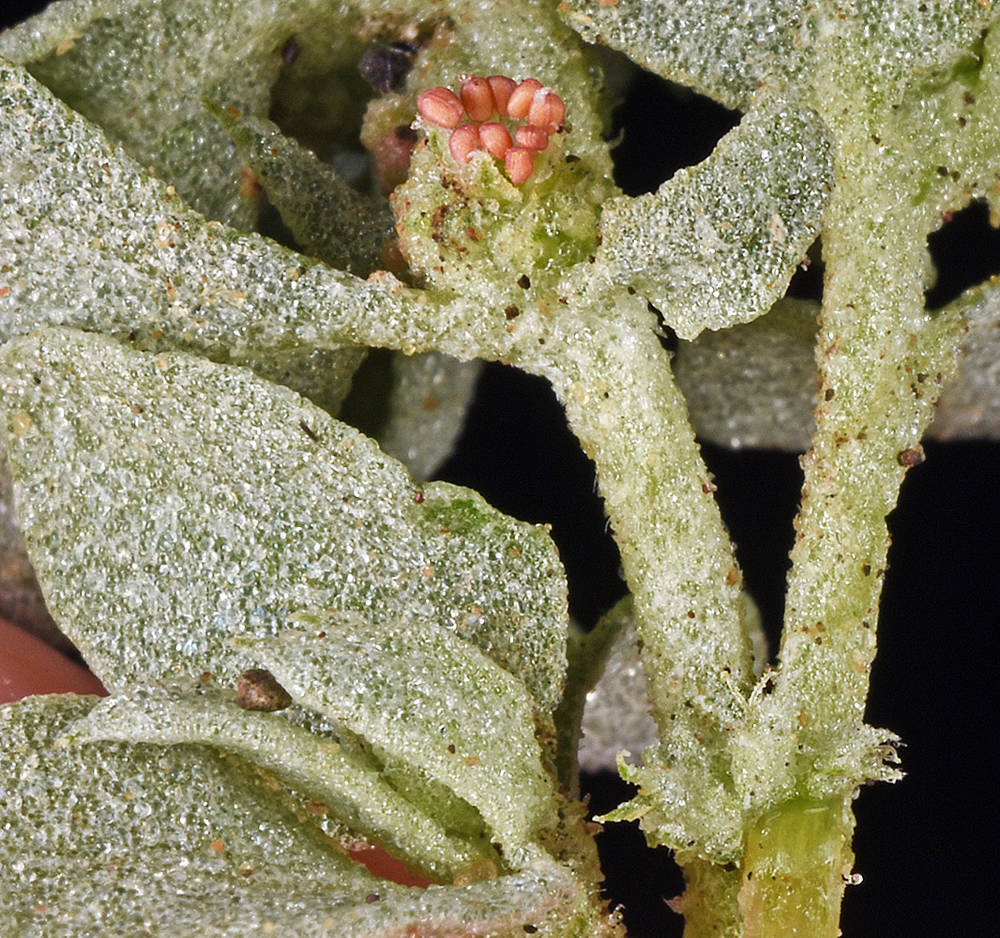Atriplex argentea
Atriplex micrantha
silverscale
twoscale saltbush
erect; much branched, sometimes striate.
mostly alternate; lowermost opposite;
blades triangular-hastate to triangular-lanceolate, 1–12 cm, green on both surfaces, bases truncate to broadly cuneate;
margins entire to irregularly dentate;
tips acute, glabrous to sparsely scaly;
petioles 20–30(40) mm.
elongated spikes, sometimes arranged in panicles, staminate and pistillate flowers intermixed.
perianths 5-parted.
dimorphic; of 2 sizes; both lacking a perianth, with 2 bracteoles.
dimorphic, with larger bracteoles 2–2.5(3) mm, brown, with smaller bracteoles 1–1.5 mm; black to dark brown; shiny.
fused just at base, broadly ovate to orbicular, 1.5–6 mm;
margins entire;
tips rounded;
faces smooth, substipitate.
=36.
Atriplex argentea
Atriplex micrantha
Streambanks, lakeshores, seasonally wet areas, ditches, sand dunes. Flowering Jul–Sep. 50–1300 m. Col, ECas, Lava, Owy. CA, ID, NV, WA; north to British Columbia, northeast to Quebec, southeast to NM; Asia, Europe. Exotic.
Bridget Chipman
- Local floras:
BC,
CA,
OR,
WA
- Local Web sites:
CalFlora,
CalPhotos,
Flora NW,
PNW Herbaria
WildflowerSearch
iNaturalist (observations)
USDA Plants Database
- LBJ Wildflower Center
- SEINet
- Plants of the World Online
- Encyclopedia of Life
- Wikipedia
- Google Image Search
- Local floras:
BC,
CA,
OR,
WA
- Local Web sites:
CalFlora,
CalPhotos,
Flora NW,
PNW Herbaria
WildflowerSearch
iNaturalist (observations)
USDA Plants Database
- LBJ Wildflower Center
- SEINet
- Plants of the World Online
- Encyclopedia of Life
- Wikipedia
- Google Image Search





